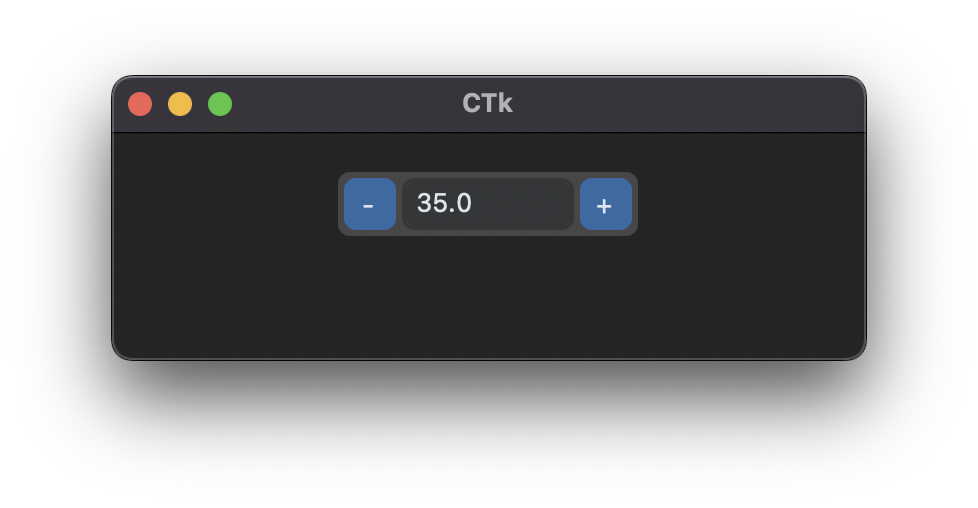-
Notifications
You must be signed in to change notification settings - Fork 1k
Create new widgets (Spinbox)
If you want to create new widgets by yourself, because you need something that's not implemented with Customtkinter, you can easily do this. In the following I created a Spinbox based on float values.
First you create a new class, that inherits from customtkinter.CTkFrame:
import customtkinter
class WidgetName(customtkinter.CTkFrame):
def __init__(self, *args,
width: int = 100,
height: int = 32,
**kwargs):
super().__init__(*args, width=width, height=height, **kwargs)By doing this, you already have a widget that has a default size given by the default values of the attributes width and height. And it also supports all attributes of a CTkFrame like fg_color and corner_radius.
A simple implementation af a float based Spinbox could look like the following:
class FloatSpinbox(customtkinter.CTkFrame):
def __init__(self, *args,
width: int = 100,
height: int = 32,
step_size: Union[int, float] = 1,
command: Callable = None,
**kwargs):
super().__init__(*args, width=width, height=height, **kwargs)
self.step_size = step_size
self.command = command
self.configure(fg_color=("gray78", "gray28")) # set frame color
self.grid_columnconfigure((0, 2), weight=0) # buttons don't expand
self.grid_columnconfigure(1, weight=1) # entry expands
self.subtract_button = customtkinter.CTkButton(self, text="-", width=height-6, height=height-6,
command=self.subtract_button_callback)
self.subtract_button.grid(row=0, column=0, padx=(3, 0), pady=3)
self.entry = customtkinter.CTkEntry(self, width=width-(2*height), height=height-6, border_width=0)
self.entry.grid(row=0, column=1, columnspan=1, padx=3, pady=3, sticky="ew")
self.add_button = customtkinter.CTkButton(self, text="+", width=height-6, height=height-6,
command=self.add_button_callback)
self.add_button.grid(row=0, column=2, padx=(0, 3), pady=3)
# default value
self.entry.insert(0, "0.0")
def add_button_callback(self):
if self.command is not None:
self.command()
try:
value = float(self.entry.get()) + self.step_size
self.entry.delete(0, "end")
self.entry.insert(0, value)
except ValueError:
return
def subtract_button_callback(self):
if self.command is not None:
self.command()
try:
value = float(self.entry.get()) - self.step_size
self.entry.delete(0, "end")
self.entry.insert(0, value)
except ValueError:
return
def get(self) -> Union[float, None]:
try:
return float(self.entry.get())
except ValueError:
return None
def set(self, value: float):
self.entry.delete(0, "end")
self.entry.insert(0, str(float(value)))Of course you could add a configure method or more attributes to configure the colors in the init method.
But with the above implementation you can use the spin box like the following:
app = customtkinter.CTk()
spinbox_1 = FloatSpinbox(app, width=150, step_size=3)
spinbox_1.pack(padx=20, pady=20)
spinbox_1.set(35)
print(spinbox_1.get())
app.mainloop()
CustomTkinter by Tom Schimansky 2022
The Github Wiki is outdated, the new documentation can be found at: